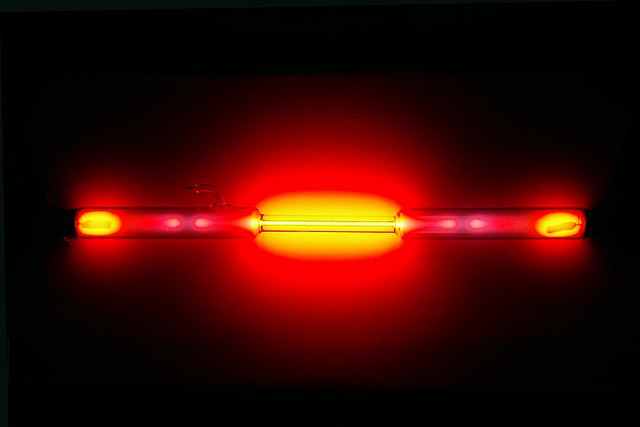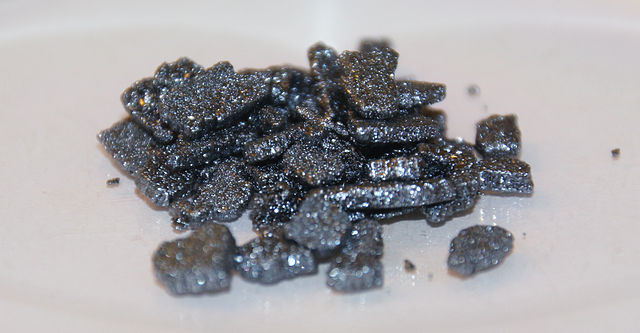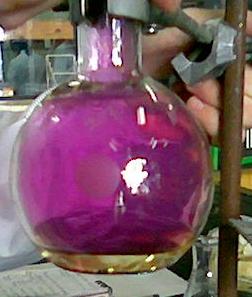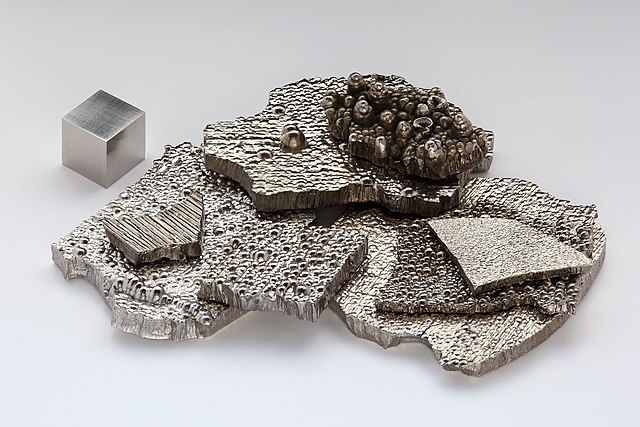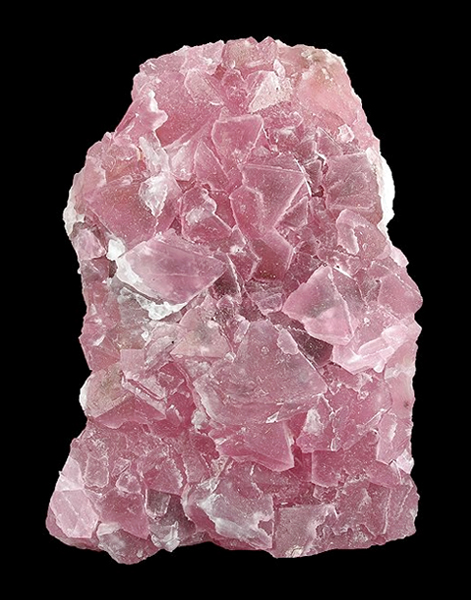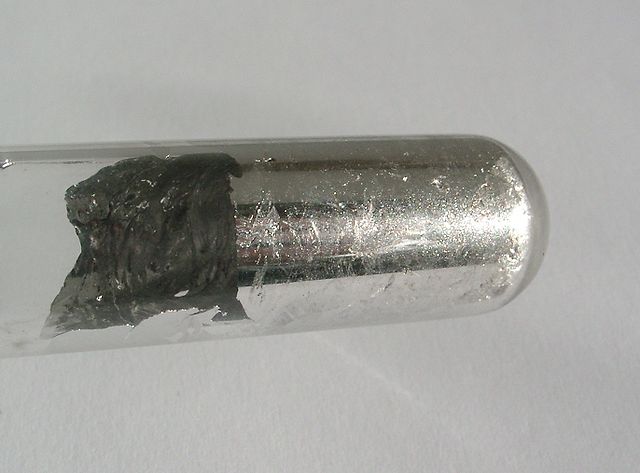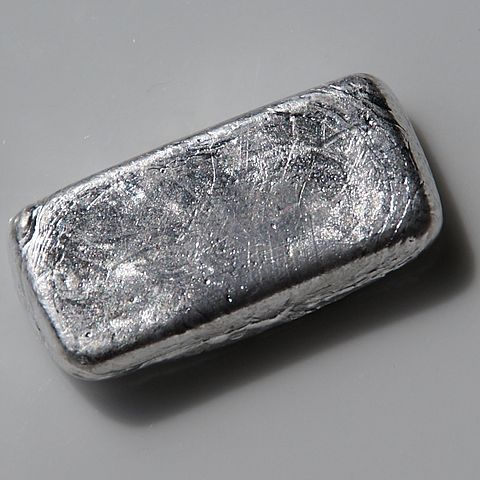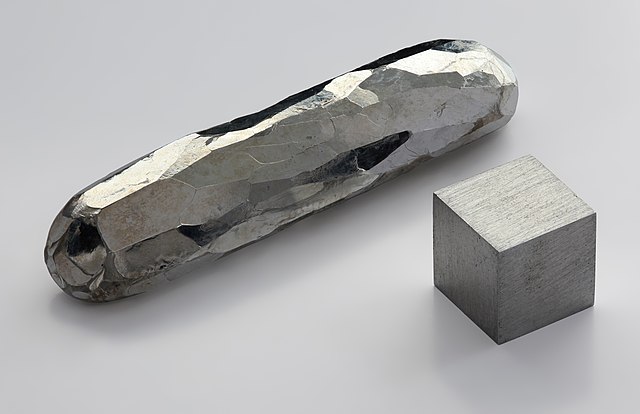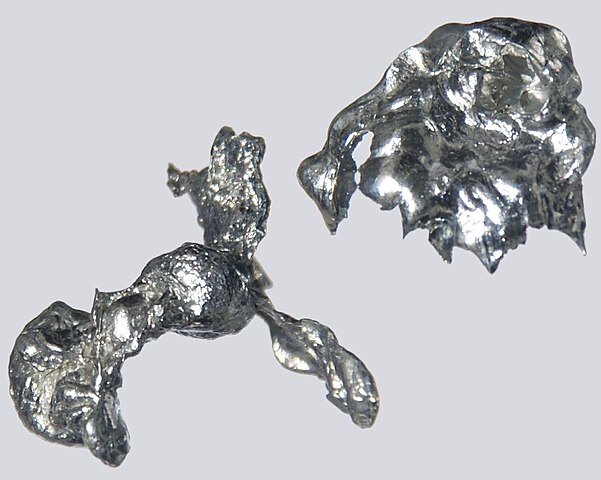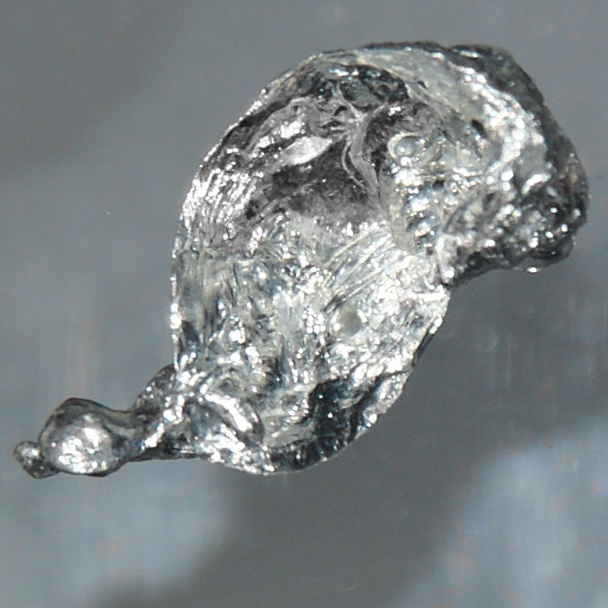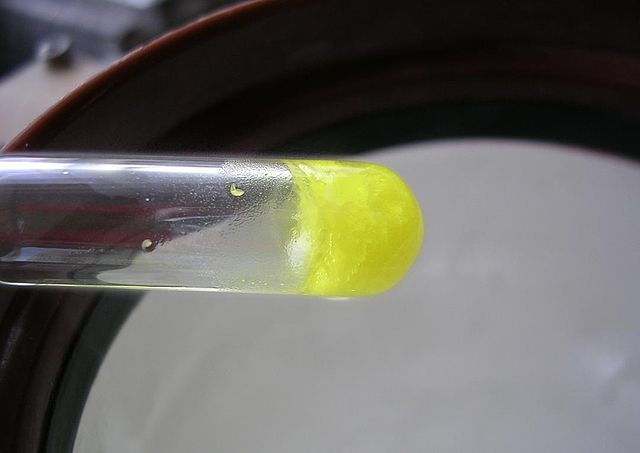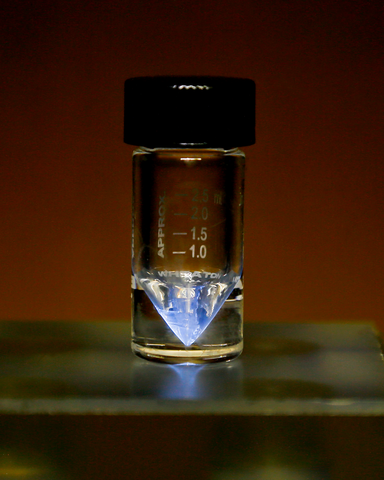Manganese is an essential mineral found in trace amounts in the human body, but it also plays an important role in many industries and advancements in modern technology. With a long history of use in everything from construction materials to medicines, manganese has been a consistent part of human development for centuries. In this article we'll explore the unique properties of manganese, as well as its various applications, health benefits, environmental impact, and potential uses in the future.
Manganese is a chemical element with the symbol Mn and atomic number 25, and is the fifth most common element in the Earth's crust. It is found naturally in soil and water, and is used in many industries for its unique properties. Manganese is a metal, but it is not found in its pure form in nature, and must be extracted from ores and refined into usable products.
One of the most important properties of manganese is its high melting point of 1,242°C (2,268°F). This makes it highly durable and resistant to corrosion, which is why it is often used in the production of alloy metals. It is also an excellent absorber of gamma radiation, which is why it is used in radiation shielding.
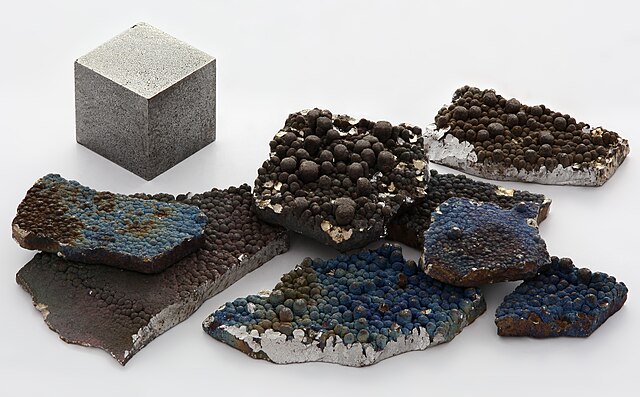
Manganese is also a very important nutrient for plants and animals, and is essential for the growth and development of cells and tissues. It helps regulate hormones and is essential for the absorption of important vitamins and minerals. In humans, manganese is found primarily in the liver, kidneys, and bones and is involved in the metabolism of carbohydrates, proteins, and fats.
Manganese also has antimicrobial properties, and has been used for centuries to treat skin infections and other ailments. Studies have also found that manganese can help protect against certain types of cancer, as well as neurological diseases like Parkinson's.
The unique properties of manganese make it a valuable resource for many industries, and its versatility has allowed it to become a key component in many modern technologies. In the following sections, we'll explore the history of manganese use, the mining and refining process, the various applications of manganese, and the potential risks and benefits. We'll also look at the environmental impact of manganese use and the potential for manganese in the future.
History of Manganese Use
Manganese has been used by humans for centuries, since it was discovered as an element in 1774. Although the power of manganese wasn’t fully understood then, the metal has been mined and used in various forms throughout history.
Ancient civilizations such as the Greeks, Romans, and Egyptians used manganese in a variety of ways. The Greeks and Romans made coins from manganese, while the Egyptians crafted jewelry and pottery with the metal. During this time, manganese was also used as a pigment for paint and ceramic glazes.
By the 19th century, manganese was being mined in Europe and the United States. It was used to make steel and to produce fertilizer. In the early 1900s, the steel industry experienced a surge in manganese use as the metal was used to increase the strength and durability of steel. This allowed for the construction of larger and more durable structures.
The early 20th century saw a decline in manganese use due to the introduction of new alloys and production technology. However, manganese use increased again in the 1950s as the demand for steel grew. During this time, manganese became an important part of the production of stainless steel, and it also played a role in the development of new alloys.
By the 1980s, manganese had become an essential component in the production of alloys for the aerospace industry, as well as in the production of batteries. Today, manganese is used in a variety of industries, including the automotive, electronics, and construction industries. It is also used in the production of certain pesticides and fertilizers.
Manganese has come a long way since its discovery. It is a versatile metal that has been used in a variety of ways in the past, and is still used today in many industries. As technology continues to advance, manganese will undoubtedly remain an important part of the global economy.
Mining and Refining Manganese
Manganese is a chemical element of the transition group and a silvery-gray metal with atomic number 25. It is a commonly used metal, particularly in steel production, as an alloying agent. Manganese is mined from the earth’s crust from ore deposits, mainly in Australia, Brazil, and South Africa.
The mining of manganese ore is a complicated process that requires significant technological advancements. The ore is extracted through open-cast mining, which involves digging deep underground to reach the ore deposit. Once the ore is extracted, it is sent to a processing plant where it is crushed, screened, and sifted. The result is a concentrated mineral ore that is separated from other elements, such as iron, lead, and zinc.
After extraction, manganese ore is transported to a refinery where it is further refined to remove impurities. The refining process involves a range of chemical and physical treatments, including heating, smelting, and sintering. This process can involve the use of hazardous chemicals, so it is important to ensure the safety of the workers and the environment.
Once the metal is extracted, it is shipped and used in industry for a variety of applications. Manganese is most commonly used in the production of steel and iron, as it increases the strength and durability of the metals. It is also used in the production of aluminum, brass, and copper alloys, as well as in the manufacture of batteries, ceramic products, and nitrogenous fertilizers.
Manganese is a versatile metal with many industrial applications, and its use is constantly being refined and developed as technology and industry advances. As such, it is one of the most important metals used in modern times, with a wide range of potential applications in the future.
Applications of Manganese
Manganese is an essential element with many versatile uses. It is used in a variety of industries and can be found in a variety of products. From steel to batteries, manganese is an important part of many modern products and processes.
Manganese is used to make steel stronger and more durable. When added to steel, it improves its hardness and resistance to corrosion. It also allows the steel to resist wear and tear better. Many tools and components used in construction, engineering, and manufacturing are made from steel that contains manganese.
Manganese is also used to make alloys, which are combinations of different metals. These alloys are used in a wide range of applications, from aircraft and automobile parts to consumer electronics. Manganese alloys are also used to form coins and jewelry.
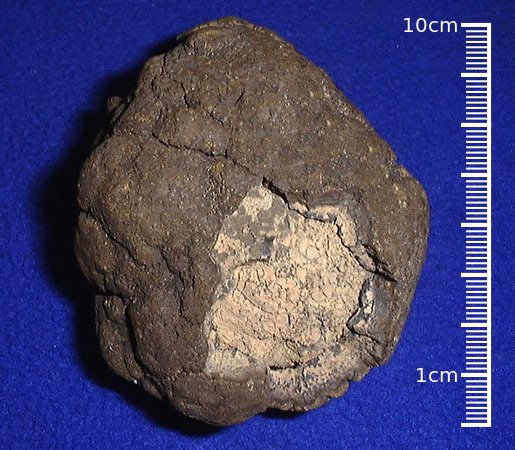
Manganese is also used to create a variety of specialty chemicals. It is used in the production of adhesives, fertilizers, and ceramic glazes. It is also used as a pigment in paints and inks. Manganese oxide is used to treat water and wastewater, and it is also used in the production of batteries.
Manganese is an important nutrient for plant health and is used as a fertilizer in some agricultural applications. It is also used in animal feed and can even be found in some dietary supplements for humans.
Manganese has even been used to create a variety of medical products and treatments. It is used in the production of drugs that treat certain medical conditions and is also sometimes used in surgery.
Manganese is a versatile element with many different applications. It is used in a wide variety of industries and products, and its use continues to grow as new applications are discovered. From steel and alloys to batteries and medical products, manganese is an important part of modern industry.
Health Benefits of Manganese
Manganese, like other minerals, is an essential nutrient that plays an important role in human health. It helps the body absorb important vitamins and minerals and aids in the production of enzymes. Additionally, it is a crucial component of several biochemical reactions that are necessary for human health and development.
Manganese is an important nutrient for bone health, and it plays a role in the formation of connective tissue. Trace amounts of manganese may also be beneficial for brain health by helping to facilitate the production of neurotransmitters. It has also been linked to improved mental performance, improved memory, better sleep, and a decreased risk of depression.
Manganese is also a powerful antioxidant, and it is thought to protect the cells from damage caused by free radicals. It is also believed to help reduce inflammation throughout the body, which can help prevent various chronic diseases. Studies have shown that adequate manganese intake may reduce the risk of developing certain types of cancer, as well as reduce the risk of stroke and other cardiovascular diseases. Additionally, it has been linked to a reduction in blood pressure and improved insulin sensitivity.
Manganese is also believed to be beneficial for skin health. It is important for the production of collagen and elastin, which help keep the skin healthy and supple. Studies have also shown that manganese may help to reduce wrinkles and improve skin tone.
Finally, manganese is an important nutrient for reproductive health. It helps to regulate reproductive hormones and plays a role in the development of sperm and egg cells. Studies have shown that adequate manganese intake may reduce the risk of infertility and improve overall fertility.
Overall, manganese is an essential nutrient for human health, and adequate intake is important for the maintenance of good health. It is important to ensure that you get enough manganese in your diet, as deficiencies can lead to a wide range of health issues. It is also important to note that while manganese has many potential health benefits, too much can be toxic, so it is important to speak with your doctor about your manganese intake to ensure that you are getting the right amount.
Environmental Impact of Manganese
Manganese has been used for centuries in a variety of ways, and as a result has been subjected to environmental impacts. The mining and refining of manganese causes a variety of both direct and indirect environmental effects. The direct effects of manganese mining and refining can include destruction of wildlife habitats, erosion, and soil and water contamination.
The indirect effects of manganese mining and refining can be far reaching. For example, the transportation of manganese ore and its related products can increase air pollution and cause noise disturbance in nearby areas. In addition, the inefficient use of energy, water, and other materials associated with manganese mining can lead to increased greenhouse gas emissions and contribute to climate change.
The typical environmental effects of manganese production can include the release of hazardous air pollutants and particulate matter, the generation of wastewater, and the release of by-products that contain manganese. These by-products can include dust, slurry, and sediment, which can be released into nearby rivers and streams. The release of these pollutants can lead to water and soil contamination, and can ultimately cause harm to animals and plants in the area.
It is important for industries that handle manganese to take appropriate steps to reduce the environmental impact of their operations. This can include the implementation of energy-efficient production processes and the use of cleaner technologies. In addition, companies should consider reducing their water consumption, and developing strategies to reduce their waste output.
To reduce the environmental impact of manganese mining and refining, organizations should also consider working with local stakeholders and communities. By working together, companies can create mutually beneficial strategies to reduce their environmental impact. In addition, companies should consider sustainable approaches to manganese production, such as recycling manganese and using renewable energy sources.
Overall, manganese is an important element for a variety of industrial and technological applications. As a result, it is important for companies to take steps to reduce the environmental impact of their operations and to consider sustainable alternatives. By doing so, they can ensure that manganese production remains a viable option for the future.
Manganese in the Future
As the demand for new materials and technologies continue to increase, it is reasonable to expect that manganese will remain an important element in the future. Manganese has already become an essential element for the production of steel and has been increasingly used in emerging technologies such as lithium-ion batteries and fuel cells.
However, the potential applications of manganese go beyond the traditional uses. Research has suggested that manganese could be key in the production of new and more powerful magnets, as well as in solar energy and nuclear energy technologies. It is also being studied for its role in medical technologies such as nanosensors and prosthetics.
In addition to these potential applications, there is also a growing interest in the use of manganese in environmental protection. Manganese has been found to have the ability to absorb toxic metals and other pollutants from water. This could help to reduce water contamination and protect human health.
Finally, there is a potential for manganese to be used in the production of green energy. Manganese is a naturally occurring element that has the potential to be used in the production of hydrogen fuel cells. This technology could be used to reduce our reliance on fossil fuels and help reduce carbon emissions.
As the potential applications of manganese continue to grow, so too will the demand for the element. This means that the mining and refining of manganese will become increasingly important. Companies and governments will need to ensure that these activities are done responsibly and with minimal environmental impact.
Manganese is an incredibly versatile element with a wide range of potential applications. It is clear that, in the future, manganese will remain an important element for the production of both traditional and emerging technologies. Through responsible mining and refining, as well as a focus on environmental protection, manganese could continue to be a powerful force for good in our world.
Information
| Pronunciation | MANG-gə-neez | ||||||||||||||||||||||||||||||||||
|---|---|---|---|---|---|---|---|---|---|---|---|---|---|---|---|---|---|---|---|---|---|---|---|---|---|---|---|---|---|---|---|---|---|---|---|
| Appearance | silvery metallic | ||||||||||||||||||||||||||||||||||
| Standard atomic weight Ar°(Mn) | |||||||||||||||||||||||||||||||||||
|
|||||||||||||||||||||||||||||||||||
| Manganese in the periodic table | |||||||||||||||||||||||||||||||||||
| Atomic number (Z) | 25 | ||||||||||||||||||||||||||||||||||
| Group | group 7 | ||||||||||||||||||||||||||||||||||
| Period | period 4 | ||||||||||||||||||||||||||||||||||
| Block | d-block | ||||||||||||||||||||||||||||||||||
| Electron configuration | [Ar] 3d5 4s2 | ||||||||||||||||||||||||||||||||||
| Electrons per shell | 2, 8, 13, 2 | ||||||||||||||||||||||||||||||||||
| Physical properties | |||||||||||||||||||||||||||||||||||
| Phase at STP | solid | ||||||||||||||||||||||||||||||||||
| Melting point | 1519 K (1246 °C, 2275 °F) | ||||||||||||||||||||||||||||||||||
| Boiling point | 2334 K (2061 °C, 3742 °F) | ||||||||||||||||||||||||||||||||||
| Density (near r.t.) | 7.21 g/cm3 | ||||||||||||||||||||||||||||||||||
| when liquid (at m.p.) | 5.95 g/cm3 | ||||||||||||||||||||||||||||||||||
| Heat of fusion | 12.91 kJ/mol | ||||||||||||||||||||||||||||||||||
| Heat of vaporization | 221 kJ/mol | ||||||||||||||||||||||||||||||||||
| Molar heat capacity | 26.32 J/(mol·K) | ||||||||||||||||||||||||||||||||||
Vapor pressure
|
|||||||||||||||||||||||||||||||||||
| Atomic properties | |||||||||||||||||||||||||||||||||||
| Oxidation states | −3, −2, −1, 0, +1, +2, +3, +4, +5, +6, +7 (depending on the oxidation state, an acidic, basic, or amphoteric oxide) | ||||||||||||||||||||||||||||||||||
| Electronegativity | Pauling scale: 1.55 | ||||||||||||||||||||||||||||||||||
| Ionization energies |
|
||||||||||||||||||||||||||||||||||
| Atomic radius | empirical: 127 pm | ||||||||||||||||||||||||||||||||||
| Covalent radius | Low spin: 139±5 pm High spin: 161±8 pm |
||||||||||||||||||||||||||||||||||
| Other properties | |||||||||||||||||||||||||||||||||||
| Natural occurrence | primordial | ||||||||||||||||||||||||||||||||||
| Crystal structure | body-centered cubic (bcc) | ||||||||||||||||||||||||||||||||||
| Speed of sound thin rod | 5150 m/s (at 20 °C) | ||||||||||||||||||||||||||||||||||
| Thermal expansion | 21.7 µm/(m⋅K) (at 25 °C) | ||||||||||||||||||||||||||||||||||
| Thermal conductivity | 7.81 W/(m⋅K) | ||||||||||||||||||||||||||||||||||
| Electrical resistivity | 1.44 µΩ⋅m (at 20 °C) | ||||||||||||||||||||||||||||||||||
| Magnetic ordering | paramagnetic | ||||||||||||||||||||||||||||||||||
| Molar magnetic susceptibility | (α) +529.0×10−6 cm3/mol (293 K) | ||||||||||||||||||||||||||||||||||
| Young's modulus | 198 GPa | ||||||||||||||||||||||||||||||||||
| Bulk modulus | 120 GPa | ||||||||||||||||||||||||||||||||||
| Mohs hardness | 6.0 | ||||||||||||||||||||||||||||||||||
| Brinell hardness | 196 MPa | ||||||||||||||||||||||||||||||||||
| CAS Number | 7439-96-5 | ||||||||||||||||||||||||||||||||||
| History | |||||||||||||||||||||||||||||||||||
| Discovery | Carl Wilhelm Scheele (1774) | ||||||||||||||||||||||||||||||||||
| First isolation | Johann Gottlieb Gahn (1774) | ||||||||||||||||||||||||||||||||||
|
|||||||||||||||||||||||||||||||||||

